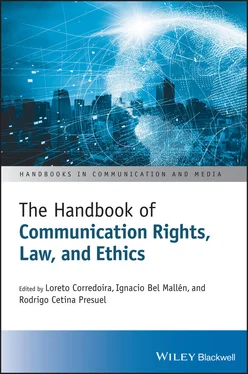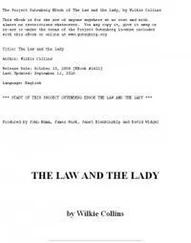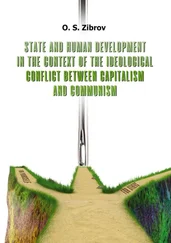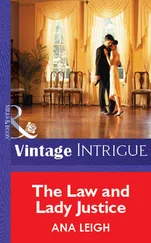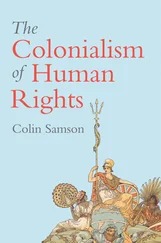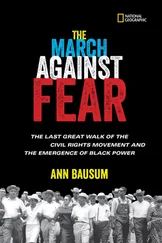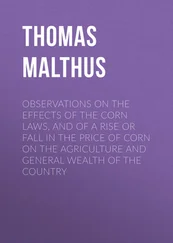The strong development of technologies for information sharing, coupled with the globalizing nature of today’s world, is giving citizens an increasingly strong and effective presence in the information world. As a result, it is increasingly common for citizens to become disseminators of news and opinions. For example, in some cases, bloggers can acquire millions of followers and become opinion leaders. Unless they are journalists, such individuals cannot be considered qualified subjects or qualified informers in the legal sense of those terms, yet they become true centers of information dissemination.
Today, many legal possibilities exist for individuals to contribute to information dissemination. These run the gamut from “collaborative journalism,” such as the consortium that covered the Panama Papers, to news media that mimic journalist societies, such as Le Monde; information providers that follow various entrepreneurial models from individual property to crowdfunding initiatives, such as the Dutch daily De Correspondent (MediaLab Press 2017); and finally classical limited companies and corporations. As De Correspondent cofounder and editor Ernst-Jan Pfauth declared (Wijnberg 2014), “If we call someone a subscriber, it suggests that person is a passive consumer who pays for content, reads it and that’s all. What we really want is an active relationship with our readers. That is why we call them members.”
In the United States, influential nonprofit journalism exists in the form of National Public Radio and the Public Broadcasting Service, which are known as “public media,” though only in the sense that they have a vocation of service to the public. They are NGOs that operate from public donations and funding from the government and foundations. Organizations for investigative journalism, such as ProPublica, are growing in relevance and are seeking crowdfunding.
In all countries, a multiplicity of online media, supported by multiple technological possibilities, has taken root in recent years. These media can offer generalist content or, more importantly, specialized content responding to a greater or lesser extent to the particular needs of a segmented public. This is an area without limits, and we are witnessing the beginning of its development.
This reality, which has only just begun if we take a historical perspective, is accelerating new possibilities for searching for, receiving, and imparting information. Unfortunately, the development of this reality is not without its dangers, which center fundamentally on the ethical use of information dissemination. These dangers also include lies, defamation, attacks on personal rights, and various other forms of insult. Let us hope that Desantes Guanter (1974) was correct when, in thinking about the possibilities for exercising the right to communicate, he said, “There is no doubt that reality will prevail and that the ‘should be’ will slowly but inexorably align with [the right].”
Communication rights are universal because they protect everyone – this is the so-called subjective universality – including all media and platformsthat exist today and that will be invented in the future (technical universality). These rights are also universal in the sense that they “exist regardless of frontiers” (Price 2020), 16what we call the geographic universality of communication rights. More relevant to the messages and content of communication is the fact that these rights apply not only to any “expression” and “opinion,” but also to “ information and ideas of all kinds.” This includes, of course, journalism, political and religious discourse, opinions contained in financial ratings, commercial advertising, and citizen participation in public affairs.
Various judicial cases, including the Costeja case 17involving Google (on the emerging “right to be forgotten”) and cases on the protection of financial opinions (for example, S&P ratings, see an example of a lawsuit against S&P in Sheffield 2015) make clear that, in the twenty-first century, communication rights serve as an expanded version of the first declarations of rights in the eighteenth century or in the First Amendment of the US Constitution. These earlier declarations aimed to defend freedoms from the Crown, just as communication rights today defend media freedom from the state.
We are witnessing a revolution similar to that brought about by the printing press, which helped end the monopoly of the monarchy and privileged classes over information. Then, as now, society is moving toward new spaces of freedom for the universal subject, for every citizen.
Within this paradigm, I would emphasize that the same communication rights apply to the dissemination of information on Twitter or a blog. Even if these sites are cost free, they deal in data traffic as a form of payment. We are also talking about the same right when a child or adolescent publishes photos on Snapchat or Instagram as we are when a reputed columnist writes a piece for the New York Times or El País .
Therefore, it is clear that the signatory states to the International Covenant on Civil and Political Rights cannot prohibit media, a new dissemination method, or a set of specific contents or broadcasters, no matter how bothersome they are to some. Since the 1990s, social networks and the Internet more broadly have placed information within the reach of all (or nearly all) across borders, though a digital divide still exists. Given restrictions on freedom, we should think about how to guarantee other rights that become more vulnerable in the presence of such restrictions, such as rights to dignity and privacy. A court should rule that the dissemination of a given message is illegal only if it threatens to violate a more important or more personal right.
Rights, and therefore law, need to be crossborder. Access to Facebook facilitated the Arab Spring. The Cuban blogger Yoani Sánchez 18communicated “blindly” because she was able to send out messages on Twitter but not receive any. Society will take advantage of technology to assert its communication rights, just as individuals and groups searched for alternative media and pirate radio channels to search for, receive, and impart information within the Soviet bloc between the end of World War II and the fall of the Berlin Wall in 1989. During the Franco era, Spaniards listened to Radio Libertad (Radio Freedom), which broadcasted from beyond the Pyrenees, in order to follow the news in a country where owning or publishing a newspaper was prohibited.
1 Alandete, D. (2018). La Comisión Europea renuncia a la legislación contra las noticias falsas. El Pais newspaper (3 April). https://elpais.com/internacional/2018/04/02/actualidad/1522694360_002636.html(accessed July 24, 2020).
2 Abad Alcalá, L. (2015). “El derecho a la información y las libertades informativas en el ámbito europeo”, “El derecho a la información en los textos universales.” In: Derecho de la información: el ejercicio del derecho a la información y su jurisprudencia (ed I. Bel Mallén and L. Corredoira), 69–96. Madrid: Madrid: Centro de Estudios Políticos y Constitucionales.
3 Arellano Toledo, W. (ed.) (2012). Políticas y derecho de las telecomunicaciones en Europa, Norteamérica y México. Szeged: INFOTEC.
4 Bel Mallén, I. and Corredoira, L. (2015). El ejercicio del derecho a la información y su jurisprudencia. Madrid: Centro de Estudios Políticos y Constitucionales.
5 Bienkof, A. (2018). Theresa May calls for new laws to ban the abuse of politicians on social media. Business insider (6 February). https://www.businessinsider.com/theresa-may-abuse-politicians-social-media-twitter-facebook-bullying-laws-2018-2?IR=T(accessed July 24, 2020).
Читать дальше
